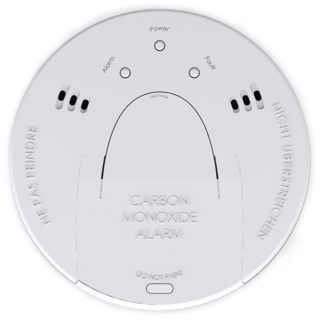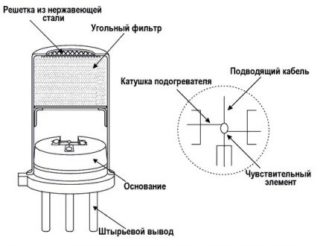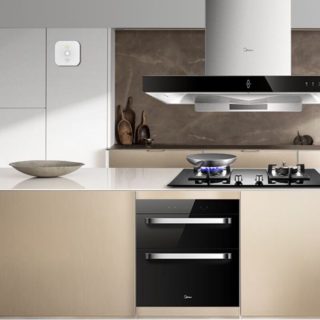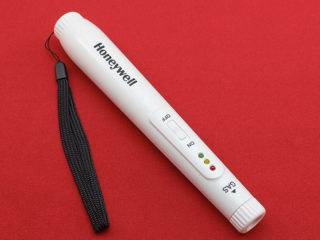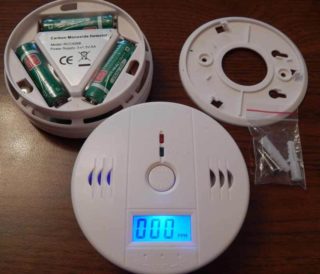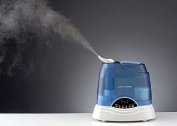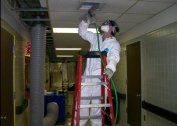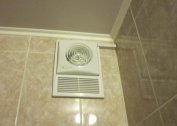Carbon monoxide is produced by burning natural gas, fuel in a fireplace, gasoline in a car engine. It is very toxic, causing poisoning and death in the smallest doses. Carbon monoxide detector - an essential element of security of a residential or utility room.
Carbon monoxide generation and its sources
Complete combustion involves the formation of only carbon dioxide and water. In fact, even natural gas does not burn so completely. Heat generation is accompanied by the formation of a mass of partial oxidation products, including carbon monoxide - CO.
The source of the substance are:
- stoves of any kind, fireplaces, gas stoves, gas heaters of any kind;
- car engines - СО is a part of exhaust gases; in a closed room they accumulate very quickly;
- fire.
The condition for the appearance of carbon monoxide is a lack of oxygen, when complete combustion is impossible. The reasons for the mass:
- poor ventilation - carbon dioxide and carbon monoxide are not removed from the room;
- insufficient oxygen supply to the furnace - poor draft, inadequately closed damper, chimney clogging, and more;
- flooded burners;
- accumulation of exhaust gases - not necessarily indoors, carbon monoxide poisoning can be even standing in a traffic jam.
When inhaled, CO enters the bloodstream, where it binds to hemoglobin and thereby blocks the transfer of oxygen to cells. It acts very quickly: when the concentration in the room air is not higher than 0.08%, a person feels suffocation, headache, severe nausea. With an increase in concentration of only 0.32%, paralysis occurs and a person loses consciousness. Within 30 minutes, the victim dies. If the concentration of CO increases to 1.2%, a person loses consciousness after 2-3 sighs, and dies after 3 minutes.
Carbon monoxide is odorless. You can notice its appearance only by the symptoms of poisoning: dizziness, knocking at the temples, vomiting, fainting.
Common carbon monoxide detector
Carbon Monoxide Detector - a kind of gas analyzer. Its task is to detect the minimum permissible concentration of carbon monoxide in the air and to signal about it. It is impossible to detect a carbon monoxide leak in a room without a special device.
They produce a variety of types of devices: thermal, electronic, optical. The general scheme includes:
- power source - rechargeable battery or battery - the device can operate from the network;
- a sensitive element - responds to an increase in matter in the air of a room and changes its own characteristic, electrical conductivity, for example;
- measuring module - here the signal received from the primary transducer is quantified and compared with a reference sample;
- executive mechanism - if the permissible value is exceeded in comparison with the standard, it turns on a warning signal.
The sensor is designed to detect only certain substances in the air. The device does not respond to smoke.
Principle of operation
Regardless of the type of gas leakage sensor works on the same principle. Air leaks through the appliance. When the monoxide content in it is exceeded, a physical or chemical reaction occurs on the sensitive device. It changes the state of the converter. If the toxic gas concentration is exceeded, the sensor generates a sound signal.In more advanced models, the signal is duplicated by actions: the device sends a message to the phone, turns on the hood, activates a call to the rescue service.
Before installation, the purchased device is checked in a non-hazardous way, for example, a lit lighter is brought. They do this to make sure that the sensor is working and to distinguish the danger signal from other notifications in the future.
The carbon monoxide detector in the apartment emits a constant continuous beep when a leak occurs. However, the signal about the malfunction of the device has the same form. Experts recommend changing it twice a year.
A discharged battery is indicated by an intermittent squeak once a minute.
Some sensors are able to recognize and respond not only to carbon monoxide or carbon dioxide, but also to a high alcohol vapor content. Such devices claim a “danger” when cooking certain dishes - pickled cabbage or cucumbers.
Sensor Classification
With the general design of the types of gas analyzers, there are many. They are classified according to various criteria. This concerns both consumer characteristics - the method of signal supply, the action being performed - and the arrangement of sensitive elements.
By type of gas detected
In the kitchen, not universal appliances are needed, but simple sensors to prevent possible dangers. Most often, the following models are installed:
- Measuring the leakage of natural gas - methane, butane, propane. Since the gas stove is the most common source of domestic gas, the threat of incomplete oxidation of the fuel is rare here. And the filling of the burner and uncontrolled evolution of gas or leakage when the stove or pipe is damaged is a very real danger. A gas domestic carbon dioxide detector is enough.
- Carbon monoxide detector - required when installing autonomous heating. Coal and wood stoves, especially those recently built, pose the greatest danger. However, gas boilers and air heaters of any kind also pose a threat. Although such equipment is equipped with its own leakage sensors, it is worth duplicating them.
- A carbon dioxide detector is the best option for forced draft equipment. Usually it has the option to turn on ventilation.
If there are different sources of danger, a combined sensor is installed - it's cheaper.
By the method of determining gas concentration
A sensitive element reacts to an increase in the concentration of toxic gas. By the type of device, several types of household detectors are distinguished:
- Semiconductor - the element is based on a silicon wafer coated with a thin layer of ruthenium or tin oxide. Carbon monoxide reacts with oxide. The conductivity of ruthenium or tin oxides is very small, and pure tin is released during the reaction. Its conductivity is much higher. The measuring module responds to a change in conductivity. If the value exceeds the set value, the sensor contacts close and the device emits an alarm.
- Catalytic - when air passes on the analyzer plate, carbon monoxide is oxidized to carbon dioxide. The amount of emitted substances determines the level of monoxide in the air. Catalytic is noticeably more expensive, difficult to maintain and is used in industrial facilities.
- Electrochemical - measurement is based on changes in the conductivity of the solution. In this case, air is passed through a vessel with electrolyte. If the permissible concentration is exceeded, the conductivity of the solution changes, and according to the readings of the electrode, the sensor module calculates the gas concentration and gives a signal.
- Infrared is a very accurate option. The sensitive element analyzes the electromagnetic spectrum and estimates the absorption band of the gas.The sensor instantly triggers, is very easy to operate and almost never fails.
- Photoionization - measure the concentration of volatile compounds. The device is monosensitive, only 1 substance is evaluated.
Any of the models can work together with a shut-off valve. In this case, the device warns of danger and turns off the gas supply.
By installation method
The design is carried out in 2 versions:
- Stationary - mounted on a wall or other surface. Usually this is done when the gas sensor also performs the regulatory task: it shuts off the gas supply, turn on the hood.
- Portable - are simpler in design and are not “tied” to sources of danger. Only the signaling device is used.
Do not place the sensor near a possible carbon monoxide source. It is quite sensitive and will respond to a working device.
Popular views
Modern devices are equipped with additional functions that allow you to solve various problems. This does not affect the quality of the device itself.
With alarm
Sound notification is a standard option. There are additional features:
- light notification with indicators - duplicates the sound signal;
- message on the phone - sent to the owner;
- a call to the gas service or to the Ministry of Emergencies.
There may be other solutions if the carbon monoxide and carbon dioxide sensors with alarms are included in the Smart Home system.
Wireless
Most models are network powered. In industrial facilities, this is justified. In everyday life, such a device increases energy consumption, as it consumes it not only at the time of analysis, but constantly. The sensor on the battery or battery is more economical.
Household
Distinguish between household and industrial analyzers. Sensitive but easy to maintain appliances are installed in homes. These are usually semiconductor and catalytic sensors. They are compact and simple. In many semiconductor models, you can replace the galvanic plate, so as not to buy a new device.
Other
The most popular include detectors with a closing valve. They are very simple, but due to the mechanical principle of operation are reliable. At the same time, a special valve is installed in the gas supply pipe and connected to the device. When the concentration of carbon monoxide is exceeded, the valve blocks the pipe. Unlock the valve manually.
Installation Features
 A carbon monoxide gas leak detector for a home can be installed independently if there is no strict requirement from the manufacturer. The option with shutoff valves is mounted only by gas service employees.
A carbon monoxide gas leak detector for a home can be installed independently if there is no strict requirement from the manufacturer. The option with shutoff valves is mounted only by gas service employees.
When installing the sensor, a number of rules must be observed:
- Gas household analyzer is recommended to be mounted on the ceiling. In fact, they are installed on the wall at the maximum permissible height - 1.5 m from the floor. Carbon monoxide is lighter than air and accumulates in the upper part of the room. The higher the sensor is located, the faster it will detect a threat.
- It is strictly forbidden to mount the device on gas equipment or on furniture.
- For the detector to work, air must move. Do not place the sensor in a room where there is no natural ventilation. In the same way, you cannot fix the device in places where the air movement is too intense: on windows, in the doorway.
Before installing the device, it is necessary to study the instructions and strictly follow the recommendations from the manufacturer.
Advantages of Gas Leak Sensors
The gas household sensor provides the user with many advantages:
- The detector picks up an increase in the concentration of dangerous substances and timely notifies residents of an apartment or house about the danger.
- Models with shutoff valves shut off the gas supply. Devices with electronic control modules include a hood, preventing the accumulation of gas.
- Modern sensors can also include a fire system and alert rescue services.
- The devices are on sale calibrated and do not require additional settings. They begin to function immediately after connecting.
- Household analyzers are easy to use.
Detectors of various types and designs are available. The choice is significant.
Sensor Service
The service rules are described in detail in the instructions and are very simple:
- The performance of the detector is periodically checked: they bring a lit lighter to the apparatus and evaluate the sound and light alarm response.
- If it is a model with shutoff valves, the valve is returned to the initial position manually.
- Every 3-4 weeks, the sensor mount is vacuum cleaned. The sensor itself is gently wiped with a damp cloth, without touching the sensor.
- In the absence of signals, with frequent false alarms, power problems, you must contact a service workshop.
The sensor indicates a high concentration of carbon monoxide. Most models no longer perform any actions. When giving a signal, the owner of the apartment must open the windows, providing good ventilation, and call the gas service. Do not turn on electrical appliances in a gassed room.
